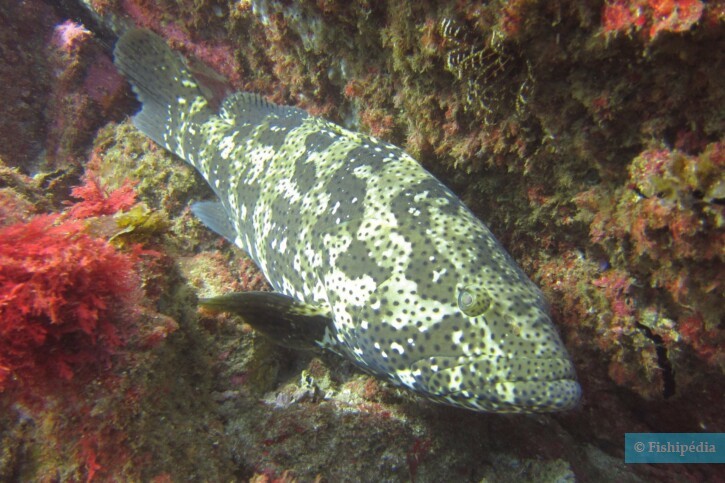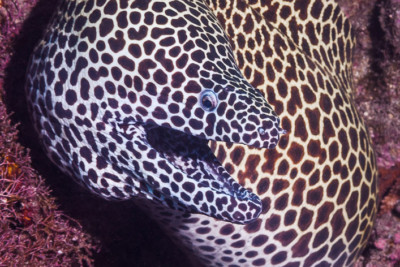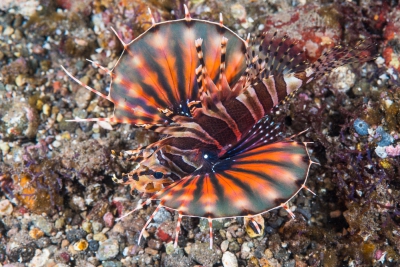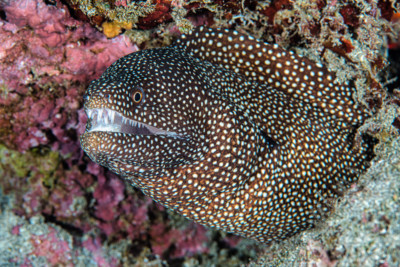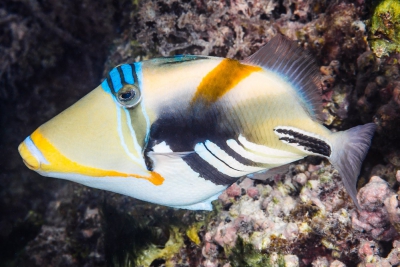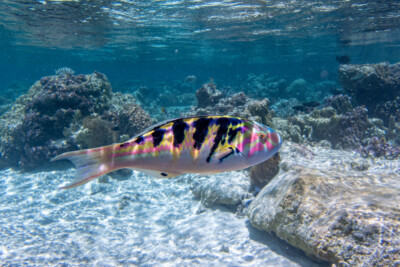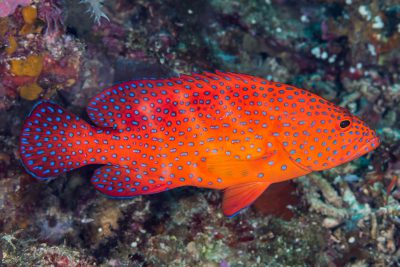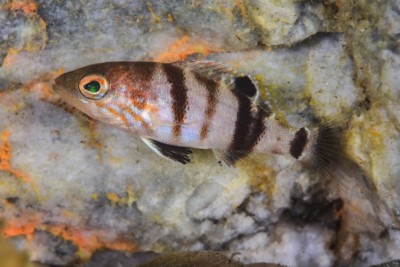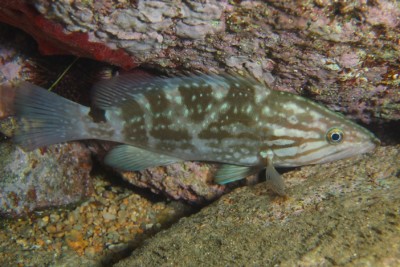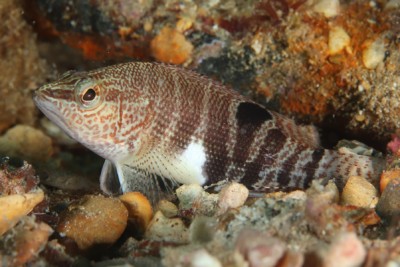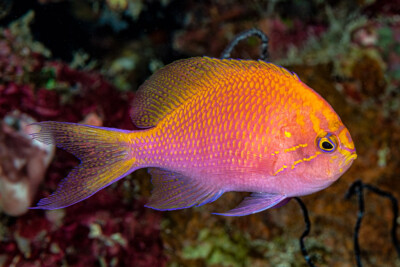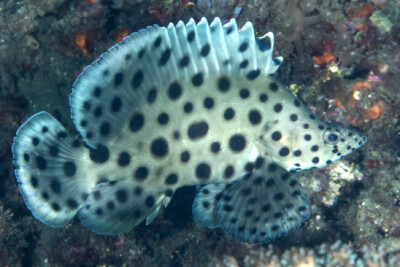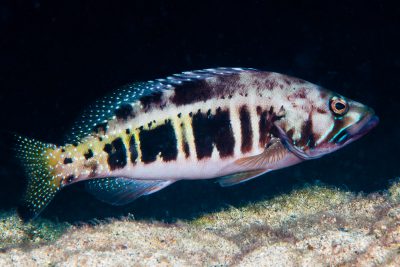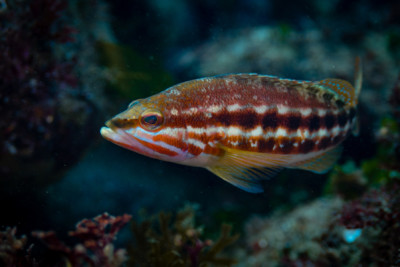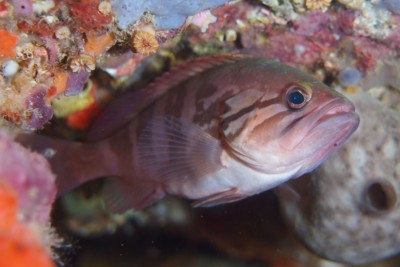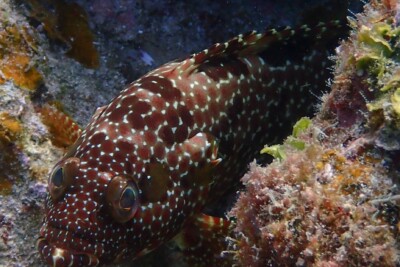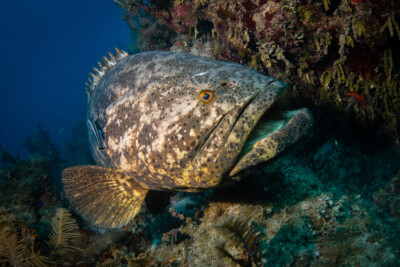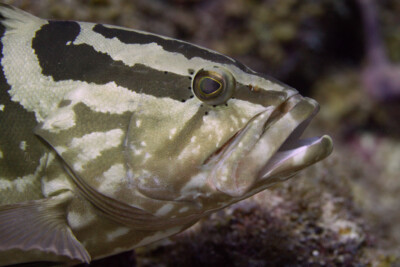Malabar grouper
| Family | Serranidae |
|---|---|
| Genus | Epinephelus |
| IUCN category (World) | LC |
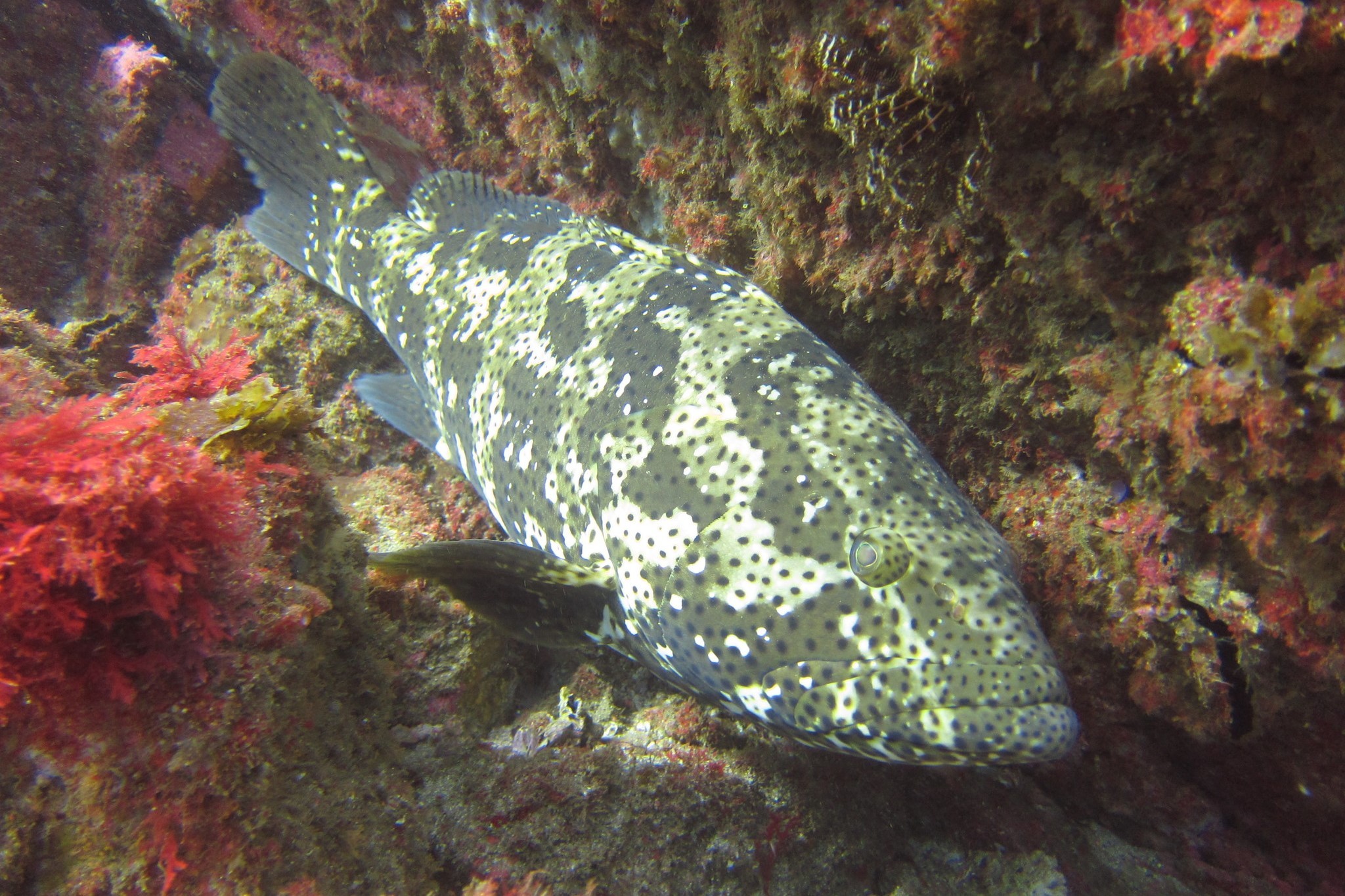

Introduction
The Malabar grouper is a fish native to the Indo-Pacific region. Adults can reach considerable sizes, with recorded catches of individuals over 150 cm and 50 kg.
Sought after for the quality of its flesh, this species is captured through various methods such as line fishing, trawling, longlining, traps, and even harpooning. In Hong Kong, it is sold as an ornamental fish. The species has nearly disappeared from several historical regions and is currently heavily overexploited in the waters of the Andaman Islands.
This grouper was one of the first to be bred in aquaculture farms. Farming began in 1973 in Penang, using imported or locally caught fry. In 2023, it is the most commonly farmed species after E. coioides.
This sheet is currently being prepared. The texts currently proposed come from our data model or are being drafted. To request priority for this content, you can write to us HERE.
Who is it?
Genus Epinephelus
In 2019, the genus Epinephelus comprised 87 species according to FishBase. These fish are commonly known as "groupers" and belong to the "serranid group" (Serranidae).
They are territorial carnivores with elongated and robust bodies. They have imposing heads with canines in the front of their jaws and protractile mouths. All species possess 10 or 11 dorsal spines.
Most species are found in coral reefs or rocky areas, with some exceptions (such as E. aeneus, E. bruneus, or E. areolatus) living in sandy, muddy, or silty bottoms. Adults are typically observed at depths ranging from 10 to 200 meters. Most Epinephelus are recognized as protogynous hermaphrodites, meaning they are born as females and become males as they grow. However, not all females may change sex, and some males may not go through this commonly accepted stage.
These fish are highly valued commercially for consumption and recreational fishing, but they are vulnerable to overfishing due to their slow growth, late maturity, and the formation of reproductive aggregations. Overfishing, particularly targeting mature individuals, can lead to sex-ratio imbalances and affect reproduction. Several groupers are now the subject of aquaculture farms (especially E. coioides and E. malabaricus).
According to the IUCN, overfishing and pollution have already caused a significant decline in the populations of many groupers, and several species are endangered.
Morphology
-
Average size100 cm
-
Maximum size234 cm
-
Mimicryrocky bottoms
-
Patterntasks
-
Average size100 cm
-
Maximum size234 cm
-
Mimicryrocky bottoms
-
Patterntasks
How to recognize This fish ?
This grouper is distinguished by its color, ranging from light gray to yellowish-brown. The body is adorned with five slightly oblique dark brown bars. The body and head are covered with numerous small black spots and marks. The skin is covered with ctenoid scales, except on the anterior-dorsal part, thorax, and abdomen where they are cycloid.
Sexual dimorphism
Being protogynous, dominant males are larger than females.
Behaviour & Life cycle
-
dietcarnivorous
-
Sociabilitysolitary
-
territorialYes
-
Way of livingdiurnal
This fish is a solitary predator of coral reefs and coastal areas. Adults primarily hunt for fish and crustaceans. Dominant males are territorial.
Reproduction
-
Reproductionovipare qui pond en eau libre
-
Hermaphroditeprotogynous
These fish reproduce seasonally, forming large aggregations during spawning, as seen in Prony Bay, New Caledonia. Each spawning contains between 99,000 to 150,000 eggs.
These fish are protogynous hermaphrodites, with a sex change occurring after about 10 years. Sexual maturity is reached at sizes between 45 and 60 cm.
Harmless species
This species does not represent any particular threats to humans when encountered in its natural environment.
Origin and distribution
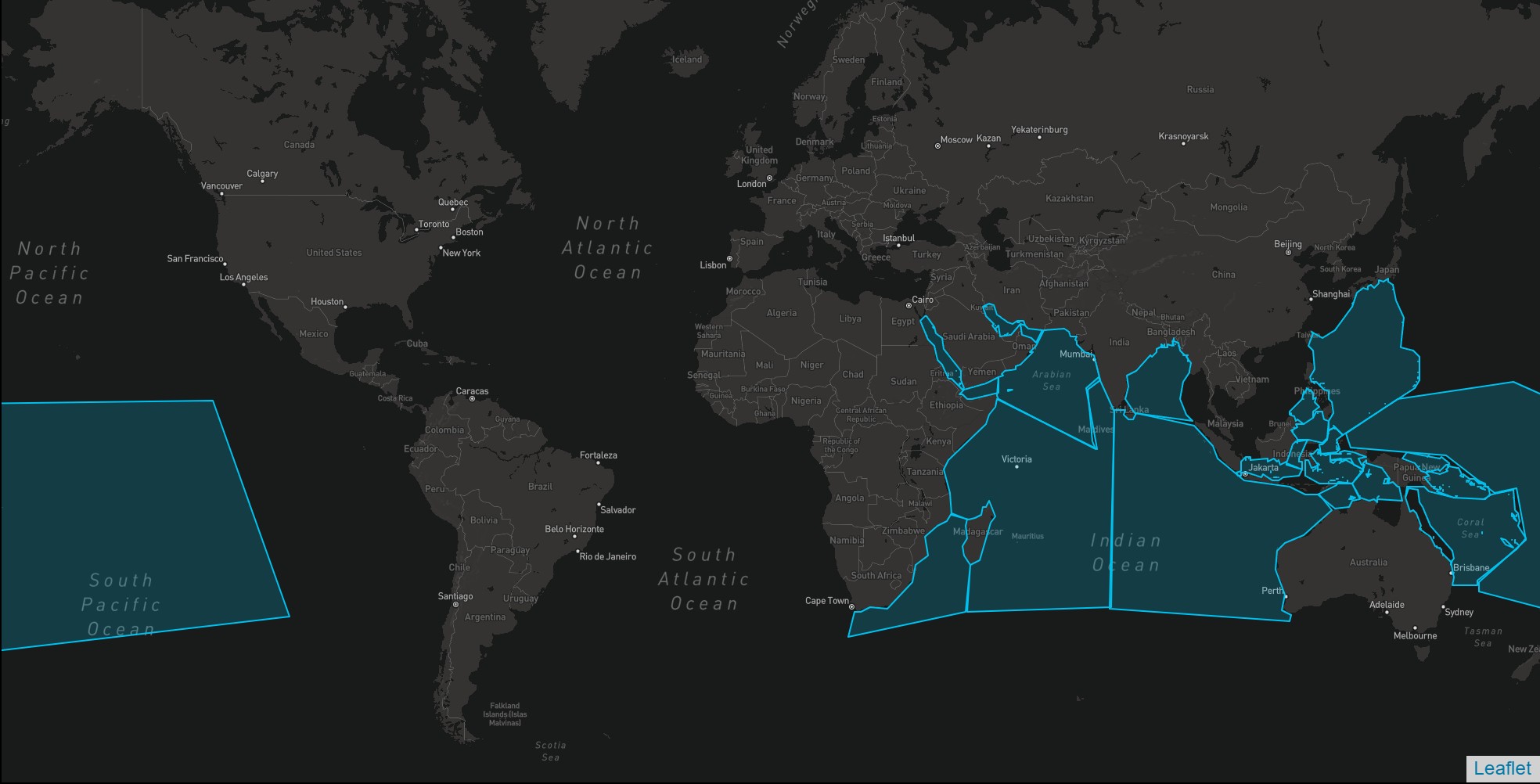
Geographic distribution & Conservation
This species is present in the Indo-Pacific region and is documented along the coastlines of East Africa, from Sudan to Mozambique. It is also found in the Red Sea, the Gulf of Aqaba, the Sea of Oman, and in most marine waters up to New Caledonia and Tonga. In Australia, it is present from the Northern Territory to New South Wales. This species is common along the west coast of India.
Overall, this species remains relatively common in most regions, but data on population abundance and fishing catches are limited, partly due to historical confusion with other closely related species.
- In New Caledonia, the species was once common but has become rare in shallow waters over the past 20 years.
- In Malaysia, this species is frequently sold in markets but in small quantities.
- In India, it is a common species along the west coast and in the Gulf of Mannar.
- In East Africa, historical data shows an 80% decline in catches since the 1980s, with very low densities even in Kenya's marine parks.
- In the western Indian Ocean and the Gulf of Aden, underwater surveys no longer record this species in Tanzania, the Comoros, and the northeast of Madagascar. Its presence seems very limited in Mozambique.
- In Hong Kong, the Malabar grouper is considered rare, and recent surveys have not located adult individuals, with a majority of immature individuals in the markets.
- In Taiwan, the species is considered "occasional" based on limited underwater observations.
- In Australia, the situation is better, with healthy populations in the Great Barrier Reef.
This species is particularly vulnerable due to its low resilience to fishing, with a population doubling time exceeding 14 years.
Conservation status of populations (IUCN)
What is its habitat?
Natural environment characteristics
-
Temperature24 - 29 °C
-
Depth0 - 150 m
Biotope presentation
This demersal species inhabits various habitats, ranging from coral reefs and rocky areas to estuaries and mangroves, from the shore to depths of 150 meters.
Juveniles live in shallow areas near the coast.
Species of the same biotope
To go further
Sources & Contributions
Participation & Validation
The Fishipedia team and specialist contributors are committed to providing high-quality content. However, although the information comes from scientific sources or testimonials from specialists, the cards may contain inaccuracies.

Benoit Chartrer
Translation
Translation done with the valuable contribution of our translators, who make this information available to a wider audience. We sincerely thank them for their commitment.
Bibliographic references
- - GBIF
- - Maturation and spawning habits in Epinephelus malabaricus (Bloch and Scheneider, 1801) from Mandapam Coastal waters, Southeast coast of India - Mohideen Abdul Badhul Haq - Khangembam Brajamani Meetei - Rosaline Mary - S. Ravichandran - Chandan Tiwary - Solid State Technology - 2020. Volume: 63 Issue:6
- - Reproductive Biology and Fishery-Related Characteristics of the Malabar Grouper (Epinephelus malabaricus) Caught in the Coastal Waters of Mafia Island, Tanzania - Lydia Gaspare - Ian Bryceson - Hindawi - 2013.
Scientific partners
Tags
#Serranidae
#Epinephelus
#barrière de corail
#crique côtière
#estuaire
#fonds rocheux
#fonds sablonneux
#fonds vaseux
#herbier
#lagon
#mangrove
#tombant
#zone mixte
#zones côtières troubles
#Bay of Bengal
#Persian Gulf
#Great Barrier Reef
#mer d'Oman
#Philippine Sea
#Red Sea
#Indonesian seas
#East Indian Ocean
#western Indian Ocean
#Western Tropical Pacific Ocean
#Réunion
Species of the same family
Same genus
Species of the same biotope
